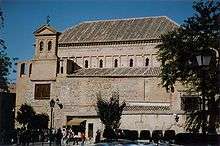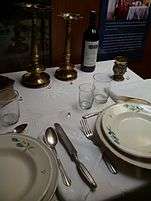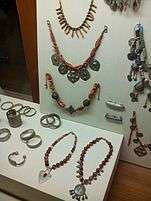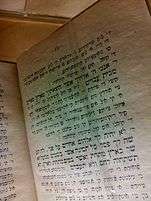Sephardic Museum

The Museo Sefardí, in Toledo, Spain, occupies the former convent of the Knights of Calatrava, annexed to the Synagogue of El Tránsito. It shows historical, religious aspects and of the customs of the Jewish past in Spain, as well as of the Sephardim, the descendants of the Jews who lived in the Iberian peninsula until 1492.
In 1964, it was decided that the Synagogue of El Tránsito or synagogue of Samuel ha-Leví be the seat of the Sephardic Museum, which aims to preserve the legacy of Hispanic-Jewish and Sephardic culture to be integrated as an essential part of Spanish Historical Heritage, task that plays until the present time. In accordance with Royal Decree 1305/2009, of July 31, creating the Spanish Museum Network, the Museo Sefardí is one of the National Museums owned and managed by the State, attached to the Ministry of Culture.
History of the Jewish people
The first room shows the history, geography and culture of the Jewish people in the Middle East, where according to the biblical writings the traditions that endured in their daily life originated. Archaeological objects dated between the 2000 B.C. and the 1st century A.C. are shown as well as a variety of cultural objects related to what it is and what it means to be Jewish, their beliefs and customs. It highlights a Torah (sacred book of the Judaism, formed by the Pentateuco) and other liturgical objects.
The Jews in the Iberian peninsula
Main testimonies of the material culture throughout the Jewish presence in Spain are exposed: from his arrival in the Iberian Peninsula, their life in Roman and Visigothic times, their development in the Al-Andalus as well as in the Christian kingdoms during the 13th and 15th centuries, the converts, the Inquisition and the expulsion in 1492.
In the north courtyard, as a necropolis, some of the sepulchral tombstones of Jewish characters from different parts of Spain are exposed. In the courtyard the archaeological remains of some possible public baths of the old Jewish quarter of Toledo and the ground of the old Torah ark (main wall) of the synagogue are conserved.
The Sephardim and their way of life
The toponym Sepharad appears in the Bible in verse 19 of the book of Obadiah; In the Hebrew language since the Middle Ages has been used to designate Spain or the Iberian Peninsula in general and, later, in other languages of culture, to Jewish Spain in particular. The use of Sephardic is also relatively frequent to designate by extension to the Jew of the medieval Sepharad, according to the meaning of the Sephardic word in Hebrew language.
This section is shown in the women's gallery, a special room for the liturgical follow-up by the female genie that owns the synagogue. As in other cultures, Judaism does not allow women to follow the liturgy from the prayer room. In this space, which preserves part of its original plasterwork decoration, there are showcases related to the daily life of the Sephardim: their birth, education, main festivals, death, etc.
Gallery
- Interior decoration of the synagogue and museum collection






